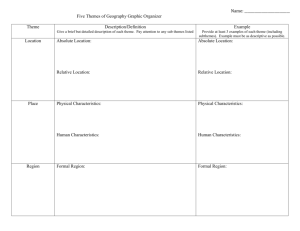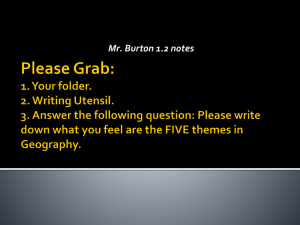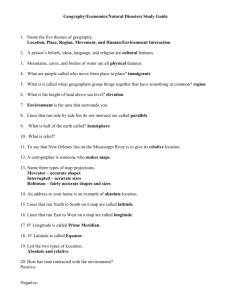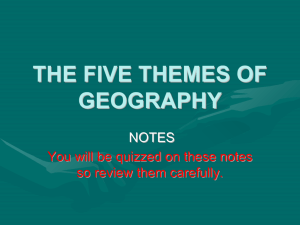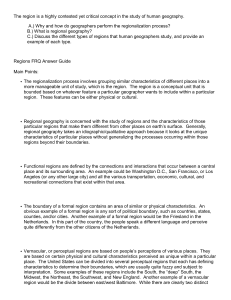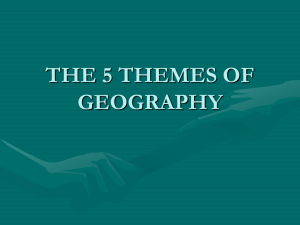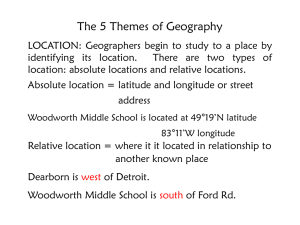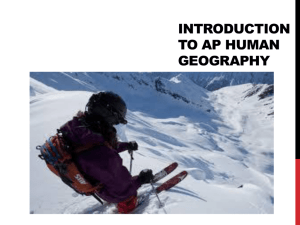World Geography
advertisement
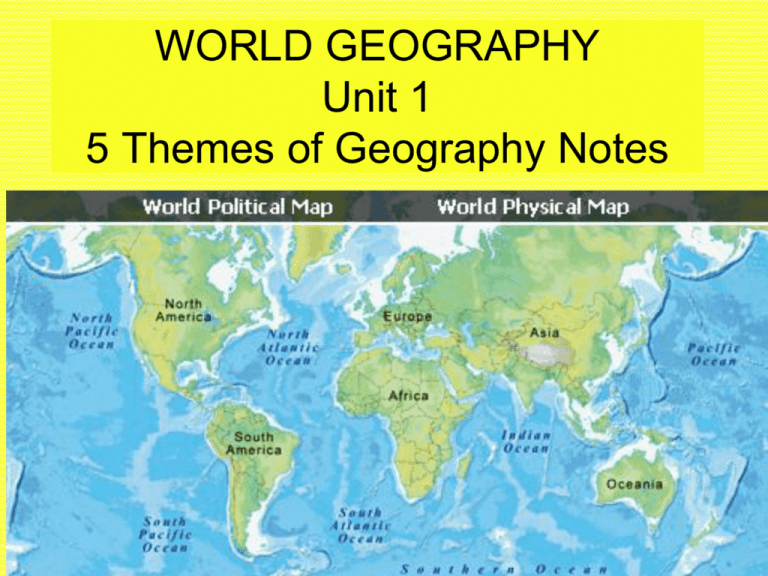
WORLD GEOGRAPHY Unit 1 5 Themes of Geography Notes 5 Themes of Geography Notes • The world ‘geography’ comes from a Greek work that means, “to describe the earth.” • Geographers look at the use of space on the earth and the interactions that take place there. • They look for patterns and connections between people and the land on which they live. • So GEOGRAPHY is the study of the distribution and interaction of physical and human features on earth. MAPS, GRAPHS & CHARTS • Geographers use many methods to study the use of space on earth. The most common one is a map. Maps are representations of portions of earth. • Geographers also use photographs to gain visual evidence about a place. They organize information into charts, graphs, or tables. This helps them to learn about geographic patterns and to understand changes over time. • Another basic tool used by geographers is the five themes of geography. These themes organize information about geography into five categories. LOCATION, LOCATION, LOCATION • Location: Where are things located? A location can be absolute (for example, latitude and longitude) or relative (for example, explained by identifying landmarks, direction, or distance between places). RECAP • Absolute Location uses Latitude and Longitude. • Relative Location uses surrounding land marks to describe it’s location. PLACE • Place: Characteristics that define a place and explains what makes it different from other places. These differences can take many forms including physical or cultural differences. • Living on an island will have physical cultural differences, than living in the mountains. REGION • Geographers divide the earth into regions making it easier to study. • Regions are defined in many ways including area, vegetation, political divisions, etc. • A region is an area of the earth’s surface that is defined by shared characteristics. • Regions usually have more than one element that unifies them. • United States is considered a region. MOVEMENT • Movement: People, items, and ideas (mass communication) move and help to shape the world. • Geographers study movement by looking at three types of distance: Linear, time, and psychological. • Linear distance means how far across the earth an idea, a person, or a product travels. • Physical geography can change linear distance by forcing a route to shift because of land or water barriers. • Time distance is how long it takes a person, product, or idea to travel. • Psychological distance is a term used to describe the way people view distance. Studies show that as we become familiar with a place, we think it is closer than it actually is. HUMAN-ENVIRONMENT INTERACTION Human Environment Interaction: This theme explains how humans and the environment interact with each other. Humans adapt and change the environment while depending upon it. • Dressing for the weather
